According to You: The worst engines you’ve experienced
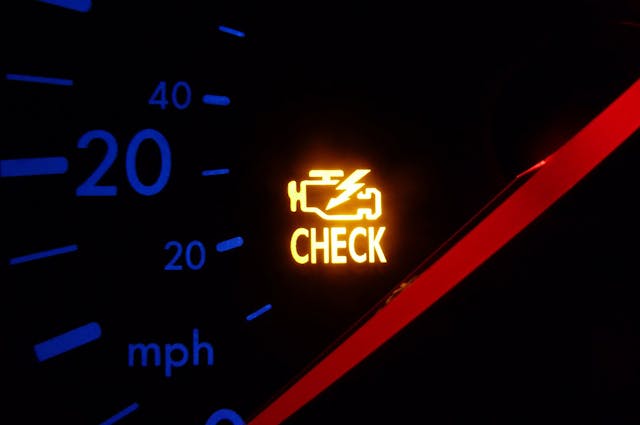
We recently asked about the worst engines you’ve experienced in your lifetime, and you certainly delivered. Perhaps too well, as the responses were overwhelming. How on earth could we cover all the bad engines made over the years? Our solution to this (wonderful) problem was thus: we thinned the herd down to responses that specifically included personal experiences that add a little more value than just the usual re-hashing of the same stories you’ve heard elsewhere.
Let’s get right to it!
The Iron Duke four-cylinder
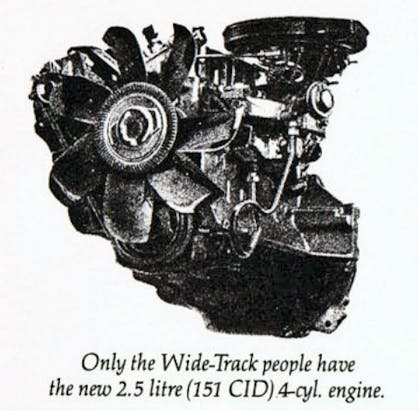
Charles A Parent said that the worst engine he ever owned was a Pontiac Iron Duke that “constantly ate Throttle Position Sensors and cracked the cast iron exhaust manifold three times.”
While the inclusion of TPS sensors suggests it might be the later TECH IV design, combining that with a four-speed shifter “that was prone to locking, in or out of gear” caused him to Lemon Law the car.
VW Type 412 1.8-liter flat-four
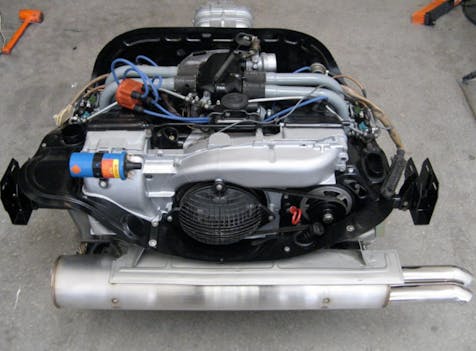
Hagerty Community user lasersailor came in strong with this one:
“I’ve got you all beat. 1679cc flat 4 in my parents 1972 VW411 wagon with a wimpy 3-speed auto transmission. Two fires caused by improper fuel injection repair at the so-called dealer in Florida. The 2nd fire caused near total immolation. Plus it was slower than a Pinto or Vega.”
Toyota 3VZ-E V-6

Hagerty Community member John Nichols gave a very balanced perspective on one of the more desirable and durable engines from Toyota, because sometimes tearing into something can turn into quite a shock:
“I recently got involved with a 1992 Toyota V-6 rebuild. The truck had a blown head gasket, the oil was full of water. Obviously these vehicles have a huge cult following of being amazingly reliable which I’m sure is well deserved.
HOWEVER when things do start to go it will cost you and assembly must be performed like a surgical operation. Parts and pieces and shrouds, crossover exhaust converters not to mention miles of vacuum lines weird little filters and of course the timing belt alignment are all part of the problem, not to mention the famous under the manifold sensor wire.
Ordinarily working on engines can be kind of fun be it a small block or an English roadster, although you have to make little tweaks often and pay attention to detail the reward of a few hours attention is measurable performance improvement.”
Chrysler 2.2-liter four-cylinder

This one might spark some controversy, as Chrysler’s 2.2-liter engine was designed specifically for a new platform and a new automotive reality. That said, Hagerty Community member David likely had an older model, but his experiences are certainly worth a read:
“As I recall memories of the early 80’s K Car with that darn 2.2 liter I feel a tension headache coming on. That engine had more use as a boat anchor, and I remember my poor dad spent more time and dollars repairing shoddy engineering design.
Crazy but true, when I got my licence and started to drive – I took that K Car to town and the engine actually fell out of the car! The front motor mount failed in the middle of an intersection. I guess even the car itself was sick of that engine and tried to spit it out.”
I reckon that A. Raymond had it even worse, but at least the dealership asked him a rather hilarious question:
“I had a Chrysler 2.2 non turbo forced upon me as a young fellow. Driving home from work in rush hour traffic, the engine decided it was time to digest itself. (It had 25,000 miles on it at the time.) The dealership accused me of ‘racing’. I laughed long and hard at the suggestion and told them I wouldn’t be doing too much racing with 88 hp.
After begrudgingly replacing the motor under warranty, I drove it another 3 months before selling it to another unfortunate schmuck. It was the worst thing I have ever had the displeasure of having to drive. I look back now and still laugh at that ‘you must have been racing’ suggestion.”
Oldsmobile Quad 4 four-cylinder

Brian was pretty sick of the Iron Duke in his 1985 Cutlass Calais, noting it was reliable but also “noisy and weak.” So imagine his delight when the Quad 4 made a splash in 1987:
“I was so excited to get one of the first Quad 4s. More power and much quieter. My love affair ended at 67,000 miles when it had a complete meltdown out of warranty. My very last GM car.”
And then we heard from Tom:
“Yes, I had the Quad 4 in a Pontiac Grand Am. Delightful, until the head gasket failed. Dealership near my work (different state from purchase point) tried really hard not to cover the failure but, after showing how much coolant I was adding, did a cheap fix. Probably tore it down to only replace the head gasket because it failed again, just out of warranty.
At that point, I was back where I bought the car, and they repaired it again, but it still didn’t seal. Any time I got in traffic, it would overheat and blow out the coolant. Tried checking the cooling system (radiator, etc.) without finding any issues. Aluminum head must have been significantly warped by that point. Finally sold that car. Too bad as it was fine as long as it was moving.”
Honda CVCC four-cylinder

Dan T Man takes us over to Honda, a brand we don’t usually hear about in this context. But he noted that the “1751 CC engine in the original Honda Accord was known to develop a head gasket leak between the #3 and #4 cylinders every 30,000 miles.” He said that it ran fine otherwise, and learned that “when the engine lost about 50 rpm at idle it was time for another change” of the head gasket.
AJD went further:
“My first brand-new car was a 1977 Honda Civic CVCC. Within 60K miles it had eaten 3 water pumps and blown its head gasket. The head gasket had been recalled but would not be replaced until blown. It really blew up nicely and the engine never ran right again.”
Buick 3.8-liter (Malaise Era) V-6

Don’t take this as a slam on Buick’s tried-and-true, 90-degree, 3.8-liter V-6. Odds are the problems that Dwayne Wertman experienced came from the Malaise Era engineering mounted to its induction and exhaust systems.
“I bought a new 1981 Oldsmobile Cutlass V-6. The engine would ping and rattle just trying to keep up with traffic. Often times it would stall in the intersection. I returned to the dealership on many occasions. It was a really good dealership, [because] after eight months they bought back and all I lost was tax and license.”
eagerdever drives home the point of this being an issue from the 1970s and early 1980s:
“I experienced oiling problems accompanied by valve train noise and the engine light in a 3.8 V-6 in a ’79 Olds Cutlass wagon. I’d stop and let the engine cool down, and then be on my way. The crankshaft finally broke in half. Because it broke on the diagonal, the engine continued to run, though poorly. A co-worker had similar problems with that engine in a Grand Prix, replaced under warranty. Another co-worker lost the engine in his Buick Skyhawk (the Buick version of the Chevy Monza). All three were due to poor oiling.”
Mitsubishi 4G54 four-cylinder with Mazda sprinkles
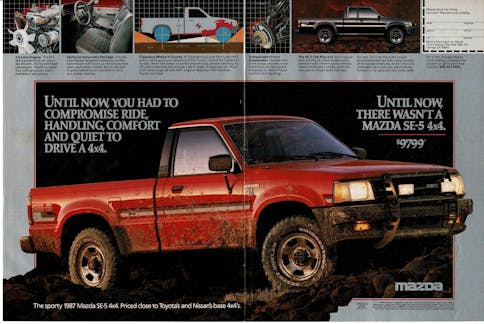
While the Buick was a victim of engineering mandates of the era, apparently Mazda shot themselves in the foot with a half-baked design made with no third-party intervention! Check out Arthur Hill’s fascinating tale of deceit:
“In 1988, as my family grew to 4, I needed to trade my Toyota 4X4 Pickup for one of the new ones with actual back seats to hold the two children. Unfortunately Toyota did not produce one until a few years later, but Mazda had a very nice looking B2600 4X4 that had back seats. This truck had the worst engine I ever had to deal with. I quickly discovered that if you really put your foot into it under a load, the engine would stutter and almost stall. Many trips to the dealer failed to solve this issue.
Finally a mechanic took me aside and admitted that Mazda rushed the truck into production without having an engine big enough, so they used a Mitsubishi 2.6 engine instead, but to make it easier to work on for their service people, they adapted their own accessories including the carburetor. Under load the only way the engine could get enough fuel was to link both barrels together all the time.
Needless to say, Mazda dropped this truck and you never see any on the road. Terrible truck with a terrible engine, but the actual Mitsubishi 2.6 engine was probably fine in their own vehicles.”
Mitsubishi 4G54/Chrysler HEMI 2.6-liter four-cylinder

No, not that Hemi. Or that one. We’re talking about the hemi-headed Mitsubishi 2.6-liter used on the Chrysler K-car and its derivatives. Chris Harshman said that the “worst engine I ever had was a 4-cylinder Mitsubishi engine in my 1982 Dodge 400. I used to joke with my friends that I could accelerate from 0-to-35 in 12 seconds.”
Subaru boxer flat-four/flat-six
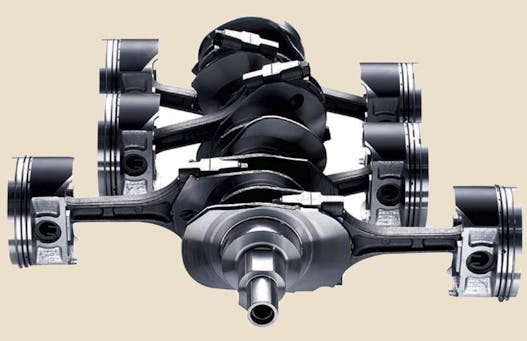
BobJ chimed in with one of the more offensive engines in modern history: the head gasket-munching Subaru boxer. But unlike other stories here, he made the same mistake twice.
“Had a 2005 and a 2010. Both blew head gaskets. Out of warranty but I complained and Subaru of America paid for half. Everyone complains about poor head gasket design & construction but I also wonder about open deck block design.”
GM 2.4-liter Ecotec four-cylinder
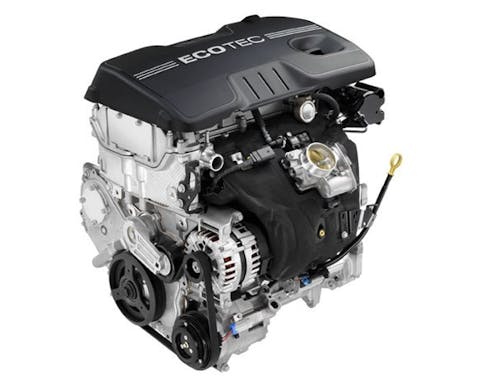
Hagerty Community member Rob keeps us in a more modern era, with a problem with the Ecotec 2.4-liter mill in his 2010 Chevrolet Equinox.
“Here’s a counterpoint for everyone who marvels at the reliability of modern cars. Launched just after GM’s bankruptcy, I should have known they probably cut corners on validation but couldn’t pass up a nice sized SUV that cracked 30 mpg.
It went through numerous high pressure fuel pumps. The timing chain tensioner went bad. The variable cam timing system went out and timing chain would slap like crazy when you started it. It had a bad heat treat on a pin in the cam shaft. Started burning over a quart of oil every 1000 miles and was rebuilt under warranty just before 50k Powertrain warranty expired. And I never got anywhere near 30 mpg on the highway.”
Ford 1.5-liter Ecoboost four-cylinder

Steve notes that his 2015-vintage, 1.5-liter, Ford EcoBoost engine is “absolute garbage compared to every other engine I’ve had the pleasure (or displeasure) of operating.” His example needed a new long block after 60,000 miles, and this helped him create a visionary notion about the EcoBoost’s promise of power and efficiency in a single engine:
“The reality is that you can’t have it all and ultimately lose out due to the extra complexity and stresses on the engine. I am not sure if the other EcoBoost variants are like this and I don’t care to find out personally.”
Holden Starfire four-cylinder

Mr. Nigel Utting takes us to the Land Down Under, reminding us that “GM Holden came up with an abominable 1.9 liter 4 cylinder named the Starfire.” The lack of power likely made Nigel’s comments far from the minority, with fuel economy numbers there were disappointing to boot:
“Based on a cut down six, this god-awful thing used to have a couple of seconds delay between hitting the accelerator and responding, a bit like downloading revs of the internet with a slow connection.”
Ford Cologne V-6

While Ford of Germany contributed greatly to the automotive landscape in Europe and the USA alike, Patrick Abbott reminds us that the Cologne V-6 wasn’t necessarily one of them. His example “regularly destroyed rocker arm assemblies and main bearings” while Richard Eaton was truly cursed with a lemon:
“I purchased a new, 1990 Ford Ranger with the 2.9-liter V6. Should have seen this coming when the transmission had to be replaced 4x for porous castings, and then both heads cracked under a recall. But then less than 50k miles after those heads they were again cracked sufficiently to turn the oil white in 1000 miles. Never again will I buy Fords.”
The Oldsmobile Diesel V-6

TerryTwoUtes picked up an example of an engine that history hasn’t looked too favorably upon: the Oldsmobile diesel.
“My parents had a ’78 Oldsmobile Delta 88 diesel, the dreaded 350 diesel engine derived from the gasser engine. After about 5–6 blown head gaskets and even one full short block replacement, it was finally traded off. Only good thing was GM trying to save face and all of those repairs were covered under extended warranty.”
Cadillac HT4100 V-8

Speaking of obvious punching bags, Hagerty Community member Coffeyclan reminds us all how low Cadillac went upon the introduction of this “High Technology” motor:
“The worst was Cadillac’s HT4100 engine. Acceleration was at a snail’s pace, the timing chain went bad twice, etc, etc, etc. I sold this car before the warranty ran out!”
Detroit Diesel “Fuel-Squeezer”

The one, the only, the legendary DUB6 threw us a curveball, thanks to his experience driving commercial trucks:
“In the mid-’70s, I drove longhaul truck for a fleet operator that leased their rigs. Most of the trucks had Cat engines and either 13 or 18 speed transmissions. As fuel prices rose during the embargo period, the leasing company offered up a Kenworth needle-nose with Detroit Diesel “Fuel-Squeezer” and 6 speed tranny to test out. Guess who was low enough on the pole to get picked to drive it for what was supposed to be 3 months?
That thing was so gutless – and the gear ratios so far apart – that even on the slightest grade, I was lucky to be able to manage 20 mph, loaded. Empty, it might get to 50 downhill, but then of course, there would be a corresponding upgrade. Fuel squeezing? Hardly. Most of the big Cats were averaging 4.5-5 mpg. This little longnose managed about 6.0 – mostly because the throttle had to be just about wide open all the time just to maintain forward momentum.
Maybe would have been fine for a flat-land operation, but in the mountainous WEST, it was pretty sad. My trips started taking up to twice as long as was projected, and several appointments would be missed every week. After about 8 weeks, the truck went back to Kenworth!”
Toyota 18R-C four-cylinder

Let’s be clear on one thing: This isn’t a slam on all Toyota 18R engines, only the California-spec motor aimed at reducing emissions. Pete notes that the 18R-C was never designed for durability:
“I am a car guy and former auto mechanic. By far the worst designed and engineered engine was a Toyota 18R-C. I have had experience with more than one, and they all burned valves every 15,000 miles even after Toyota did a factory upgrade to “fix” the problem (which it did not). I drove the car for 75,000 miles and did 5 valve jobs before I woke up and sold it for $500, it did have a good clock though.”
Chevrolet 2300 four-cylinder

Of course the 2300 motor would make the list, as there were three negative comments to this effect. It didn’t help that the early Vegas weren’t the most reliable dance partner, and NCB chimed in with a personalized tale of ownership:
“I owned a 1973 Vega GT. Yes, I’m dating myself. First, and worst car I ever owned. Engine overheated due to poor cooling system design which led to scored cylinder walls in the aluminum block. It drank oil! Bad valve stem seals and “rusting away to nothing in 5 years” were icing on the cake. MotorTrend Car of The Year in 1971!”

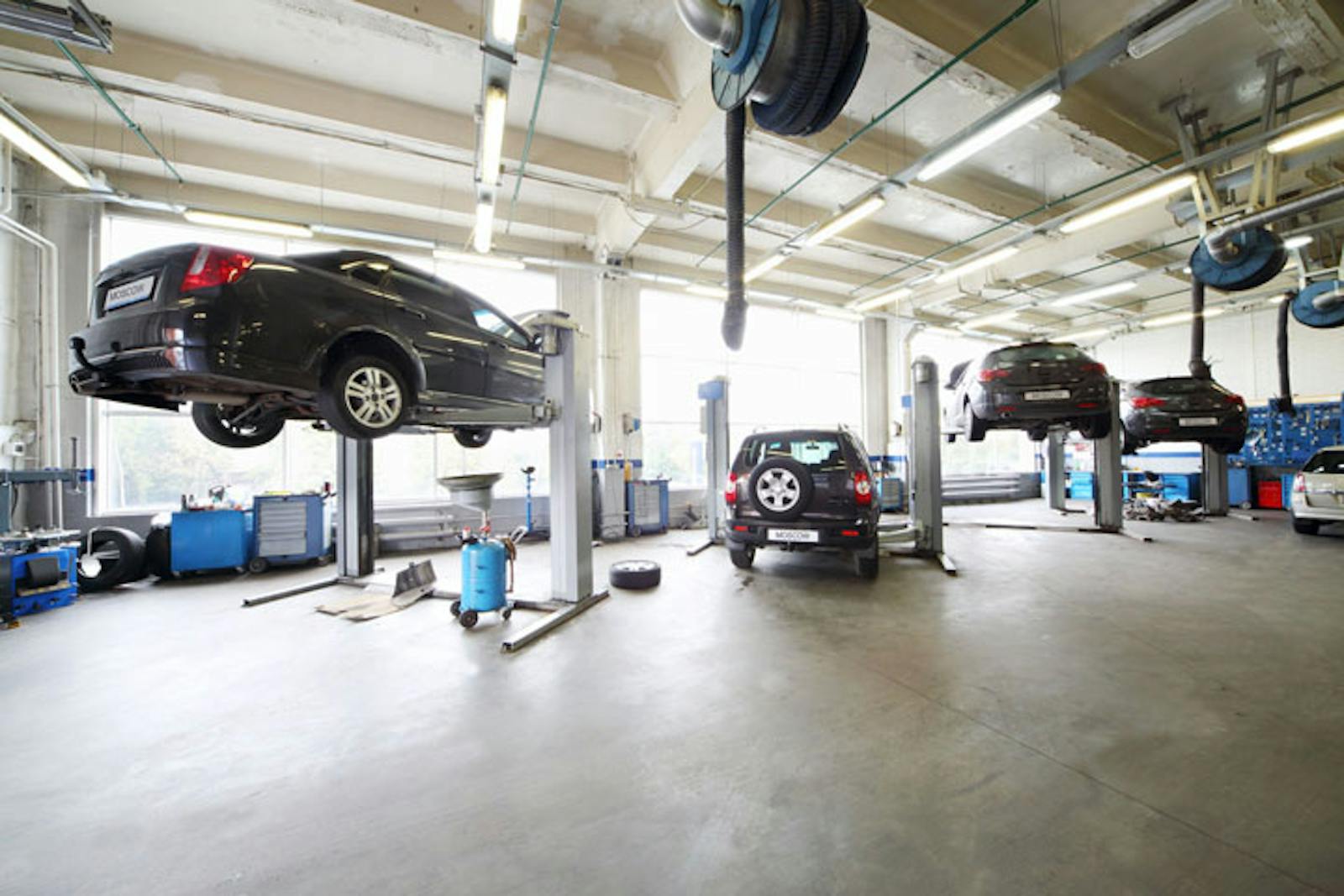
Cadillac HT 4100. The HT stood for High Trouble. Northstar Cadillac. Burn oil. Leak oil. Chevy 229 V6. It had about 6 horsepower. Quad 4 stood for 1)Lube, 2)oil, 3)filter, 4)head gasket. Every 3 months or 3,000 miles. Chevy 3.4 DOHC. Makes doing V12 Ferrari timing belts child’s play. GM 3.6 “High Feature” DOHC. Part of its High Features were bad timing chains, bad oil leaks, bad cylinder misfires, water pump failures, and NO Warranty labor time worth a plugged Nickel for the poor techs. Ask me how I know. 45 years of it.
While the current crop of Land Rovers gets roasted, justly, for quality control issues, GO TATA!, my worst experiences were with the German technology in the third gen Range Rover. The BMW 63 engine had problems with the components of its complex crankcase ventilation system turning to black licorice and silly putty with engine heat. The equally complex cooling system had a gasket in the rear of the block that insisted on springing a leak every 10,000 miles or so and the repair required transmission removal. This however, proved convenient because after 70,000, miles the ZF transmission insisted on destroying its front clutch pack every 10,000 to 15,000 miles anyway. I also had to replace the timing chain guides at around 100,000 miles. I loved driving the vehicle. It was powerful, responsive and comfortable on the road, but at about 90,000 miles it just ceased to be reliable and the fine German tech was the most to blame.
Buick Skyhawk 3.8 L V-6 was a bone shaker.. The 2 L Eagle Talon AWD TSI Turbo 4 Cylinder blew camshafts, ran valves into the pistons.. POS’s all of them! The best engine was the Ford 289 CI for the ’67 Mustang!!! And the Jeep 4L 6 Cylinder…The best!!1
Caddy 4100 What can I say. Should have topped the list.
I’m surprised the Chrysler 2.7 was not mentioned. They spun a lot of crank bearings. The junkyards are full of’em.
My experience with the 2.2 Mopar motor was excellent. The ‘82 ate a cam but I’m told using the big oil filter from the Mopar V8s was the problem (sometimes bigger isn’t better?) because the filter took too long to fill, starving the top end at startup. Always used the small filter afterwards and the replacement cam survived so who knows. The other three I had ran well over 100K, with the one in my ‘90 Omni was still going strong at 195K, when I last saw it. Not fast, but economical and durable.
I noticed a theme here – most of these bad engines came from companies with a pretty good engine reputation overall. Sounds like the common “This is working good – let’s change it” engineering theory.
My personal example – Volvo dropping their excellent, bullet-proof, B-30 in-line six for the nightmare PRV V-6.
One thing I noticed was the “head gasket issues” of what are otherwise well regarded engines. I suspect the PROBLEM IS OWNERS WHO NEVER CHANGE THE ENGINE ANTI-FREEZE!! Old anti-freeze corrodes the heads and block and the head gasket fails — seen it many times. As far back as the early 1960’s when GM introduced the Buick/Old 215 c.i. ALUMINUM V8 it developed a reputation for coolant leaks all traced to failed anti-freeze. Back then the anti-freeze was not as protective and GM discovered it had to be changed every six months in the aluminum engine vs. every year or two for cast iron engines.
How could you miss the BMW N63 4.0 litre V8. The biggest piece of crap ever manufactured. They could never get the fuel injection working and the thing eventually self destructed at 102k miles. NEVER BUY ONE.
I agree with the point that everyone can have a problem with a certain engine and that doesn’t make them all bad. But when one model shows up several times, there is a common denominator. I had a 1988 Buick Skylark with the Quad 4. It was the only front wheel drive car I ever had that would lay rubber from a stop light (not that I did that very often). I was in sales on the road and put a lot of miles on it in a short time. I loved the car, great mileage and great energy. My first head gasket blew at around 40,000 miles. A few months later I received a notice from GM stating they had discovered a head gasket problem and would replace them free of charge with a new improved gasket but only if there was less than 25,000 miles on the vehicle. This was probably in 1991 so there was very little chance that a three year old car would have that low of an odometer reading. I wrote them a letter and they actually reimbursed me for the head gasket replacement. But when the second head gasket blew about 20,000 mies later, I traded it in.
I have to disagree with some of them. A few were bad designs but most that had problems had bad execution due to the bean counters and lack of quality control, plus government emissions regulations along with the primitive tech made them miserable. Many had good potential and were supported by the aftermarket. Today, there is NO excuse for a bad engine: Chevy LS and Hemi lifters; Hyundai major engine destruction, Ford Eco-boost (WHO though it was a good idea to run the oil pump with an INTERNAL belt?).
bad engines? how about the mini Poopers, bought one new for my wife, it used a quart of oil every thousand miles, and not long after figuring out what a piece of !#$^ the car was the timing chain and tensioner gave up, what about good engines?, the little four banger in my S10, it went a couple hundred thousand miles zero problems, also had a Buick grand National that went a hundred and fifty thousand miles, no mechanical issues, the S10 suffered major tin worm and was sold, the Buick gave up its driveline for a street rod I was building.
My Mom ordered a 85 Grand Am with the Iron Duke. I did the oil changes at 3k miles. It had 180k on it when she sold it like 10 years later, no issues at all. She loved the car. As far as the Quad 4, we had 2 Grand Am Se’s with that engine. Both ran like a scalded cat and got 30mpg. Will any new car do that? My 2 cents…………
Anyone remember the German NSU rotary of the 1960″s? A friend had one, a red hardtop “Spyder,” I think. He used to beat all of us in MG Midgets, AH Sprites, TR Spitfires in sprint races. In the late 80’s, as a local SCCA chapter member, we raced similar sprints at a college campus. One old “Bugeye” AH Sprite beat us all and didn’t sound like a 4-banger. When we challenged the owner to open the “bonnet” we saw a very neat Mazda RX3 rotary drive train. After that, we all went looking for rear-ended wrecked Mazda RX-3s tpo salvage their drive lines.
In the day haveing been a fleet operator of Olds V-8’s gen 1 as well as 1982+, the later ones had many or the bugs worked out, but still not the best. GM gave our dealer a generous trade in allowance for the ones we used for trade-ins on 1983’s. Teh 80’s were brought in literally on a flatbed trailer for trade on 1983 Cutlass Calais’ with the V-6 diesel. These ran very well for us with the salesmen (who didn’t like the Olds Diesels) at the wheel. We found out through fleet management practices to have the thrrust bearing in the Roosa-Mater pumps peplaced at 70,000 mi. We also specified Rotella T 30 wt with no more than 4500 mi changes. Those two ran over 100,000 ea. before we sold them in 1987.
As far and the Fuel Squeezer 6V-92T’s and the 8V-92T’s, they were put on the market too soon. Everyone from giants Roadway, PIE and Ruan (who have been a Detroit customer for decades to Joe Blow who bought one from a dealer) experienced catastophic blower driver and other failures at 300,000 mi. This is about the same time GM ok’d the use of multi-grade 15W-40 in two stoke engines, which they later reteracted going back to straight SAE 40. Gotta remember GM is the same folks who brought you the Corvair, Vega, Oldsmobile Diesel, and the saddle tank gasoline C-10 pickups. Need I say more??? Gom’t Motors at your service. {Leaving out my 702 cu in V-12}